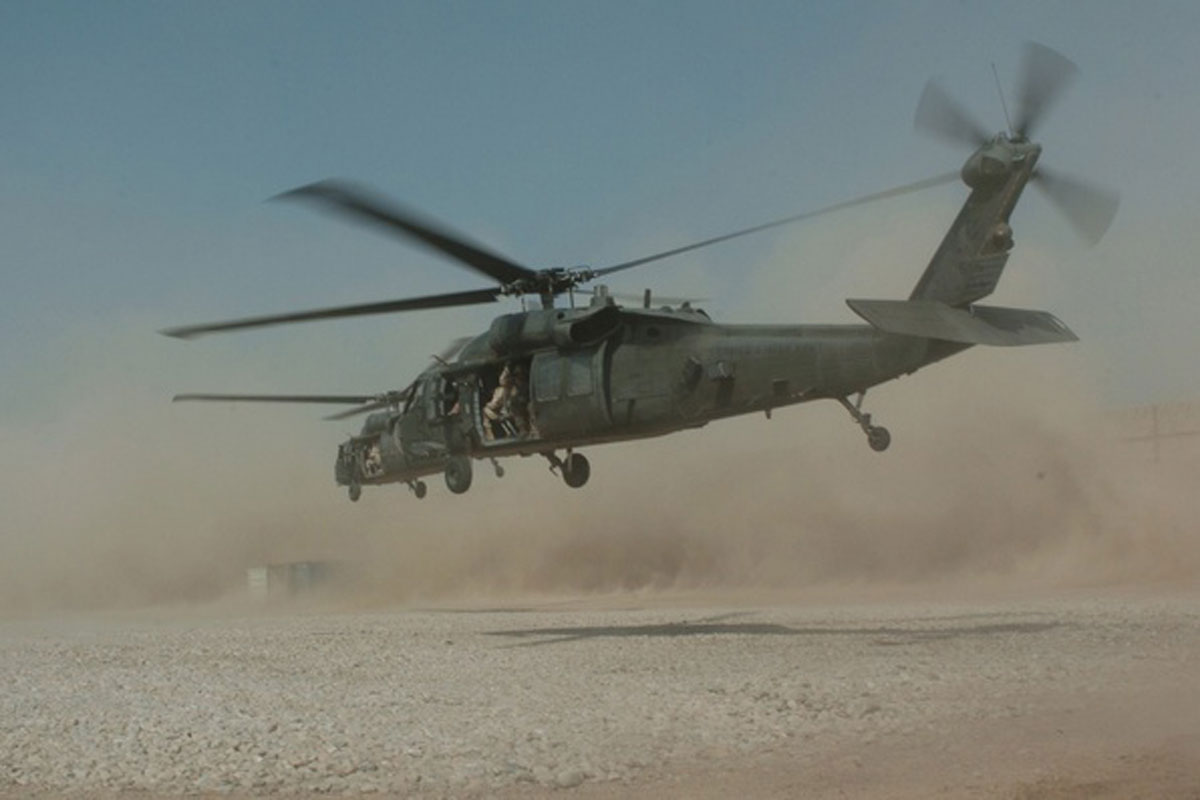Achieving Excellence: Key Techniques for UH 60 Helicopter Maintenance
Achieving Excellence: Key Techniques for UH 60 Helicopter Maintenance
Blog Article
Recognizing the Mechanics and Engineering Behind Uh 60 Helicopters
The UH-60 helicopter, commonly understood as the Black Hawk, stands as a peak of modern-day rotorcraft technology, symbolizing a mix of durable engineering and intricate auto mechanics. As we peel off back the layers of the UH-60's design, a globe of complex systems and careful design comes to light.
Background of UH-60 Helicopters
The history of UH-60 helicopters traces back to the late 1970s when the United States Army looked for a innovative and functional energy helicopter to replace its aging fleet. In feedback to this demand, the Sikorsky Airplane Corporation created the UH-60 Black Hawk helicopter. Introduced in 1979, the UH-60 promptly ended up being a staple in army operations due to its excellent abilities.
The UH-60 was developed to excel in a variety of missions, consisting of troop transportation, medical evacuation, electronic war, and special procedures. Its capability to adapt to different functions made it a useful possession to the united state Military and other army pressures around the globe
For many years, the UH-60 system has actually undergone a number of upgrades and variants to enhance its performance and keep pace with developing mission demands. These helicopters have actually seen extensive solution in disputes such as the Gulf War, Afghanistan, and Iraq, showcasing their reliability and adaptability in varied functional settings. The UH-60's abundant background is a testimony to its long-lasting legacy as a top energy helicopter.

Engine and Power Systems
Using sophisticated propulsion technology, UH-60 helicopters are outfitted with advanced engine and power systems to make certain ideal efficiency and dependability in a series of functional circumstances. The UH-60, generally referred to as the Black Hawk, is powered by two General Electric T700-GE-701D engines, each with the ability of delivering up to 1,940 shaft horse power. These turboshaft engines supply the necessary thrust for the helicopter to lug out its objectives properly, consisting of troop transport, medical discharge, and combat support.

Blades System and The Rules Of Aerodynamics
Just how do the blades system and the rules of aerodynamics of UH-60 helicopters add to their functional effectiveness and trip abilities? The rotor system of the UH-60 helicopter plays an important function in giving lift and propulsion. The UH-60 features a four-bladed, totally articulated blades system that permits high ability to move and security throughout trip. This layout makes it possible for the helicopter to execute a large range of objectives, from transportation and clinical evacuation to battle procedures.
The rules of aerodynamics also play a key duty in the efficiency of UH-60 helicopters. The streamlined body and rotor blade design minimize drag, i loved this enabling the helicopter to accomplish higher speeds and better fuel effectiveness. The wind resistant design of the UH-60 also contributes to its capacity to run in varied ecological conditions, consisting of warm temperatures and high altitudes.
Avionics and Flight Control Equipment

In its intricate coordination with the rotor system and aerodynamics of UH-60 helicopters, the avionics and trip control systems form an essential network of innovations shaping the aircraft's functional capacities. Avionics include the electronic systems made use of for communication, navigating, and keeping track of different aircraft features. In the UH-60, these systems include electronic screens, interaction radios, general practitioner navigation, weather condition radar, and autopilot systems. These avionics systems give crucial info to the pilots, enhancing situational recognition and ensuring reliable and risk-free procedure of the helicopter.
The flight control systems of the UH-60 are in charge of translating the pilot's inputs into the proper adjustments to the blades system, making certain steady flight and maneuverability. These systems consist of hydraulic actuators, servos, and computers that function with Recommended Site each other to regulate the primary and tail rotors, along with various other trip control surface areas. By specifically managing the helicopter's trip dynamics, these systems make it possible for pilots to do a variety of objectives, from transport and search-and-rescue to combat procedures, with accuracy and confidence.
Duty and Applications in Aeronautics
Avionics systems in UH-60 helicopters include an array of electronic systems that aid in navigating, interaction, tracking, and controlling different aircraft functions. These systems include digital screens, auto-pilot systems, interaction radios, GPS navigation tools, and climate radar. Furthermore, these systems incorporate safety and security attributes such as autopilot modes, terrain awareness warning systems, and stability augmentation systems to boost the general safety and functional abilities of the UH-60 helicopters in different missions, including troop transportation, clinical discharge, search and rescue, and aerial firefighting.
Verdict
In verdict, the UH-60 helicopter is a flexible aircraft with a rich history and advanced design. Its engine and power systems, rotor system, aerodynamics, avionics, and trip control systems all function together to make it a efficient and reputable equipment.
In its detailed control with the blades system and the rules of aerodynamics of UH-60 helicopters, the avionics and flight control systems form a crucial network of modern investigate this site technologies forming the aircraft's functional capacities.The flight control systems of the UH-60 are liable for equating the pilot's inputs right into the proper adjustments to the blades system, ensuring secure flight and ability to move. Avionics systems in UH-60 helicopters incorporate a variety of electronic systems that aid in navigation, interaction, monitoring, and controlling various airplane features. Additionally, these systems integrate safety features such as auto-pilot modes, terrain understanding warning systems, and stability enhancement systems to enhance the general safety and functional capabilities of the UH-60 helicopters in various missions, consisting of army transportation, clinical evacuation, search and rescue, and airborne firefighting.
Its engine and power systems, blades system, the rules of aerodynamics, avionics, and trip control systems all work together to make it a reliable and effective machine.
Report this page